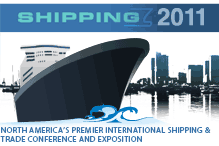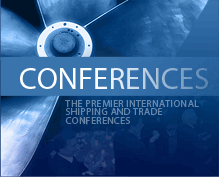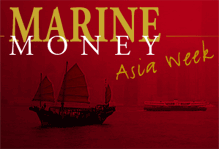
Equity – The New Debt A Fable for 2009
The sky is falling, the sky is falling” Chicken Little exclaimed. Of course in the old fable the sky does not fall, it is simply an acorn that sets off the end of the world lament.
There are different versions of the Fable, but the basic premise is that a chicken eats lunch one day, and believes the sky is falling down because an acorn falls on her head. She decides to tell the King, and on her journey meets other animals, who join her in the quest. Finally, they come across Foxy Loxy, a fox who offers the chicken and her friends his help.
After this point, there are many endings. In the most famous one, Foxy Loxy eats the chicken’s friends, but the last one, usually Cocky Lockey, survives long enough to warn the chicken and she escapes. Other endings include Foxy eating them all; the characters being saved by a squirrel or an owl and getting to speak to the King; the characters being saved by the King’s hunting dogs; even one version in which the sky actually falls and kills Foxy Loxy.
Challenges for German Based Ship Investment Funds Solved
By Dirk Lahmann and Tobias Verlende, Brinkmann & Partner Solicitors
German based closed-end Investment Funds (mostly via the legal structure of Limited Partnerships with a Limited liability Company as General Partner: GmbH & Co. KG) have been an important financing source for the global shipping industry. The volume of equity placements over the past ten years totalled to an aggregate of approximately EURO 23 billion with an annual peak level of approximately EURO 3.6 billion in 2007.
The dramatic change in the world economic climate and the corresponding deteriorating freight rates over the past months have driven many proud ships into dangerous waters. If they do not take resolute restructuring steps soon and immediately secure their implementation, it is foreseeable that many Ship Investment Funds will financially run aground. The parties involved have to realize that the negative outlook for the foreseeable future and corresponding liquidity constraints must force them to act now.
When the Invisible Hand Gets Shaky…
Increasing domestication of banks is building a threat to globalization, and in a world of scarce credit has put special pressure on that most global of industries, ship finance. Taxpayers clearly want their money to support lending that will bear them direct benefits…it’s easy to see why a working mother in Glasgow, for example, might be hard pressed to understand why bailing out an over-leveraged Greek company with ships on order in China is the best use of her tax money. And so RBS has proclaimed its intention to reduce its shipping clients by around 40%.
But in Asia, the story is a little different. Shipyards in particular and sometimes shipping companies as well employ thousands upon thousands of workers and pay the wages that provide for these workers and their families. And so it is from this part of the world that solutions will come and in this part of the world that financial institutions will receive the support that will motivate them to grow their shipping portfolios in tandem with newbuildings being constructed and delivered.
Sages of Shipping
Often we need a fresh perspective or even confirmation of what we are thinking. We are certain that there is much going on behind the scenes, between negotiations with banks and with charterers. Yet we feel that we are missing the proverbial forest through the trees. So for both affirmation and guidance, we sat down with two close friends who gave us their perspective of what, in their view, is going on today, in wide ranging discussions. There are questions but no answers for the moment.
Historically, there were certain truths about shipping which were inviolate. Credit was always available, supply was predictable, and demand was the unknown factor. The world has changed drastically. Today, there is an absence of credit; supply is unpredictable, and demand even less so. And, on the practical side, making matters worse, owners don’t know what their bankers can do, whether it relates to funding or even restructuring.
2009 One Heck of a Year According to Marine Money’s Crystal Ball
Now that it is over we can look back with satisfaction that we survived. More than that, as an industry, we hung together in a way of which we should feel proud. Sure, values collapsed, negotiations were difficult with lenders, charterers, trade creditors and our regulators but, the fact is, we made it. Well, most of us did.
We can pause just for a moment to remember the fortunes of those no longer with us but, if we are honest, we probably knew they were getting into trouble even before the collapsed. Older tonnage, easy credit, over-reliance on “first class” charterers, a breakdown here, an over-exuberant order there, but that is water under the bridge, a lesson for the next cycle. Yes, today we acknowledge the cyclicality of the industry and the fact that there is no such thing as a new paradigm. But we are not yet ready to concede that history teaches the greedy anything.
A Look At BLT
Indonesian chemical tanker owner Berlian Laju Tanker (“BLT”) has released its 2008 results this week, a balance sheet that we feel should provide some comfort to the stakeholders. Even though investors may be disappointed that net profit has declined 67.6% from USD 76.8 million in 2007 to USD 24.9 million in 2008 and no dividend has been declared, the financial strength of the company has improved as the management pro-actively seeks ways to bring down the debt level through deleveraging plans. BLT sold five vessels and leased back four for 12 years last year, booking USD 50.9 million gains, although one should also note that the company has 15 vessels still under construction as at the end of December 2008, to be completed between 2009 and 2011.
Since the leveraged buy-out of Chembulk in December 2007, the company’s balance sheet has been placed under tremendous pressure by the high gearing ratio which subsequently led to a breach of covenants on its four rupiah bonds. Net debt to equity gearing ratios based on the latest published numbers was at 1.95 times in 2008 based on USD IFRS accounts, a great improvement from 2.56 times in 2007. This decline in debt is due to the significant decline in the value of its notes and bonds as BLT practices a “mark to market” policy on its notes payable and convertible bonds. Continue Reading
Let the Bankers Speak
Marine Money hosted its 2nd Annual Hong Kong Ship Finance and Investment forum yesterday with the theme “Navigating Rough Waters: Survival Today, Success Tomorrow”. The seminar brought together over 140 participants to discuss the critical issues faced by the shipping industry today. We will be providing more coverage in the next edition but in the meantime, we bring you the highlights from the bankers’ roundtable.
Panel participants:
Nora Huvane, Director, Marine Money Asia
Mr. Charles Reineke, SVP, Global Shipping Finance Group, SMBC
Mr. Terence Yiu, Managing Director, Asia Shipping Division, BNP Paribas
Mr. Felix Ulbricht, Head of Deutsche Shipping Asia, Deutsche Bank
Mr. Paul Chang, Head of Shipping Asia, HSH Nordbank Continue Reading
Bigger, Better… Forever
We don’t know how they do it, but this year’s CMA’s shipping and trade conference and exposition, “Shipping 2009”, was not only the biggest ever but showed the resilience of the industry. The ladies of CMA, who run the conference like a well-oiled machine, tell us attendance exceeded 2,200. If sports arenas are named after corporations, it seems only fair that the Hilton be renamed the CMA during this annual event.
The success of this event is attributable to the fact that it reaches out to the whole industry and covers all of the issues it faces. This year the shipping markets and piracy got equal billing. While, naturally, our main focus is on the shipping markets, Professor Christopher Coker’s presentation on piracy highlighted its significance, permanence and far-reaching risks, if it becomes linked with terrorism. For us, the rude awakening was his statement that unlike the 19th century when piracy was eradicated, today the best we can hope for is to “manage risks.” And, if we are unsuccessful even in that, we will have far more serious issues. The speech is a must read for its realistic but unfortunately bleak perspective of our future.
From the extensive three day program our chairman puts together with the assistance of the CMA, we have selected the following as perhaps being of the greatest interest to our readers.
Deleveraging
Teekay LNG Partners announced on Tuesday that it plans to offer 4 million common units in a public offering led by Citi, Morgan Stanley and UBS Investment Bank. Underwriters will be granted the option for another 600 thousand shares to cover over-allotments. Interestingly the proceeds of the offering are not to be used to cover capex but instead to repay amounts outstanding under one of its revolvers, which amounts may subsequently be re-borrowed. The shares were priced yesterday at $17.60, a premium of $0.10 over Tuesday’s closing price. Gross proceeds, including the over-allotment, will approximate $81 million.
Not Even the Young Are Immune
With only four months elapsed since inception, Seanergy Maritime Holdings also reported 4thQ and year-end 2008 results. During September, the company took delivery of the bulk of its fleet of six vessels, consisting of two Panamax, two Supramax and two Handysize vessels.
During this quarrter, the company took a non-cash impairment charge of $49.3 million against goodwill ($44.8) and one vessel ($4.5) reflecting declining asset values. This, in turn, required a waiver of the breach of the company’s LTV covenant by the banks, with the quid pro quo being the suspension of the dividend.
Nevertheless, Seanergy is well positioned with cash reserves of $44 million as of today in addition to locked-in above market revenues through September 2009. The company is the beneficiary of a somewhat incestuous relationship. The vessels, originally acquired from the Restis Group (“Restis”), are chartered to South African Marine Corporation (“SAMC”), also an affiliate of Restis, which, in turn, owns 61% of Seanergy. Given this relationship and relatively short remaining charter duration, there is little likelihood that SAMC will terminate or renegotiate these charters. Moreover, there is a strong probability that SAMC, as operator, fixed at least some of these vessels out at higher rates. And, as it is larger and private, Restis is in a better position to withstand the pain than its offspring.







